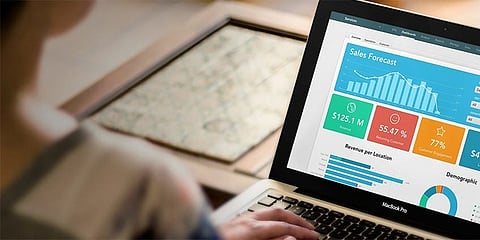
- Insights
- Cryptocurrencies
- Stocks
- White Papers
- Industry
- Geography
- Insights
- Cryptocurrencies
- Stocks
- White Papers
- Industry
- Geography


Forecasting is used in almost every area of business today. It is an essential tool for managing an organization of any size. In business meetings and conferences executives often hear about forecasts for the next quarter or year from their company CEOs or directors. Data analysts spend a considerable amount of time to make a forecast based on the historical data. Prediction of sales volume, stock prices, demand, and trends is the backbone of decision-making in most of the organizations. It is a business necessity which pays off if analyzed and optimized effectively.
Data collected over time is complex in nature and include components related to seasonality, irregularity, and cyclicality. As a result, it is important to select the right forecasting method to handle the increasing variety and complexity of data to forecast correctly. However, before selecting the forecasting model, a forecaster needs to have answers to the following questions.
These questions will help forecasters direct themselves to the right forecasting model and build an accurate set of growth projections for their businesses.
What are forecasting models?
In statistics, there are two types of methods by which a business forecast can be made. These are categorized broadly into qualitative and quantitative models.
Qualitative Models
Qualitative models are used to make short-term forecasts. These models depend on the information available in different sources which have been quoted by thought leaders. The qualitative model is used when the availability of data is low. These models are frequently used in predicting numbers based on:
Market Research: It incorporates procedures for testing hypothesis from the available numbers for real markets.
Delphi Method: This method involves taking opinions from experts through questionnaires and then using it into a forecast.
The objective of qualitative models is to forecast numbers based on logical and unbiased opinions. A lot of organizations use a combination of these methods to forecast sales and revenues. However, there are a few limitations to this method. The first one is that it depends solely on opinions which may be wrong. Secondly, the accuracy of this method is not high and mostly depends on human judgements.
Quantitative Models
Quantitative models are used when the data is available for several years and we can build relationship among variables. Further, quantitative models can be categorized as:
Regression Model: The model uses the least square technique to form an equation based on a dependent and one or more independent variables.
Econometric Model: The econometric model tests the relationships between variables such as GDP, inflation, and exchange rates over time. The model forms interdependent regression equations.
Time-Series Model: The objective of a time-series model is to discover patterns in historical data and extrapolate it into forecasts. It uses exponential smoothing, ARIMA,and trend analysis to forecast data for the next time period.
Leading Indicator: This model uses the relationship between different macroeconomic activities to identify leading indicators and estimate the performance of the lagging indicators.
Both qualitative and quantitative models provide decision-makers with numbers which are useful in production planning, financing, and business optimization. A successful forecaster removes irregularity and non-stationary components in data. However, there are a few factors which might lead to wrong forecasts. This happens when:
1) The data is inaccurate.
2) The data is produced with a lag and requires revision.
3) The data is a proxy for the decision-making criteria.
So, it is crucial to address them before jumping on any business decision.
End Notes
Forecasting plays a pivotal role in long-term business planning. An accurate analysis of trends is vital in managing the growth of organization, and ultimately in ensuring its success. However, necessary steps should be taken to review the forecasts before making the blueprint of sales and marketing plans. A right forecast will make your business more profitable and pave the way to a successful organization. In a nutshell, forecasting is like a magical crystal ball that can see the future when asked the rights questions and used the right techniques for all your business problems.
